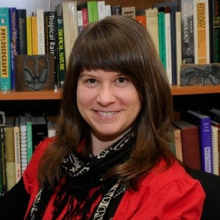Corrie Moreau, Ph.D

I'm interested in the origin and evolution of species, and in particular, how different factors may influence patterns of diversification. More specifically I'm interested in how we can use molecular methods, next-generation sequencing, and comparative genomics to address these questions.
Teasing apart the factors that have lead to the prolific diversity of the ants is an active line of research in my lab. From the rise of the flowering plants, associations ants have with other insects and plants, to their microbial community are all potential underlying factors that may have facilitated their ecological dominance in almost all terrestrial ecosystems.
Molecular phylogenetics and phylogenomics are powerful tools for inferring the evolutionary history and diversification of biodiversity. By using diverse tools and analytical methods I'm working to understand the macroevolutionary factors that have facilitated the evolutionary success of ants and shaped their biogeographic distributions.
By uncovering the diversity and putative function of host-associated microbes we may begin to understand how these interactions are driving the evolution of both partners. Much of my research focuses on gut-associated bacteria in the ants. By coupling this information with data on diet, trophic ecology, evolutionary history and biogeography, I hope to gain a better understanding of how intimate interactions influence patterns of diversity. To learn more, please visit the Moreau Ant Lab.

